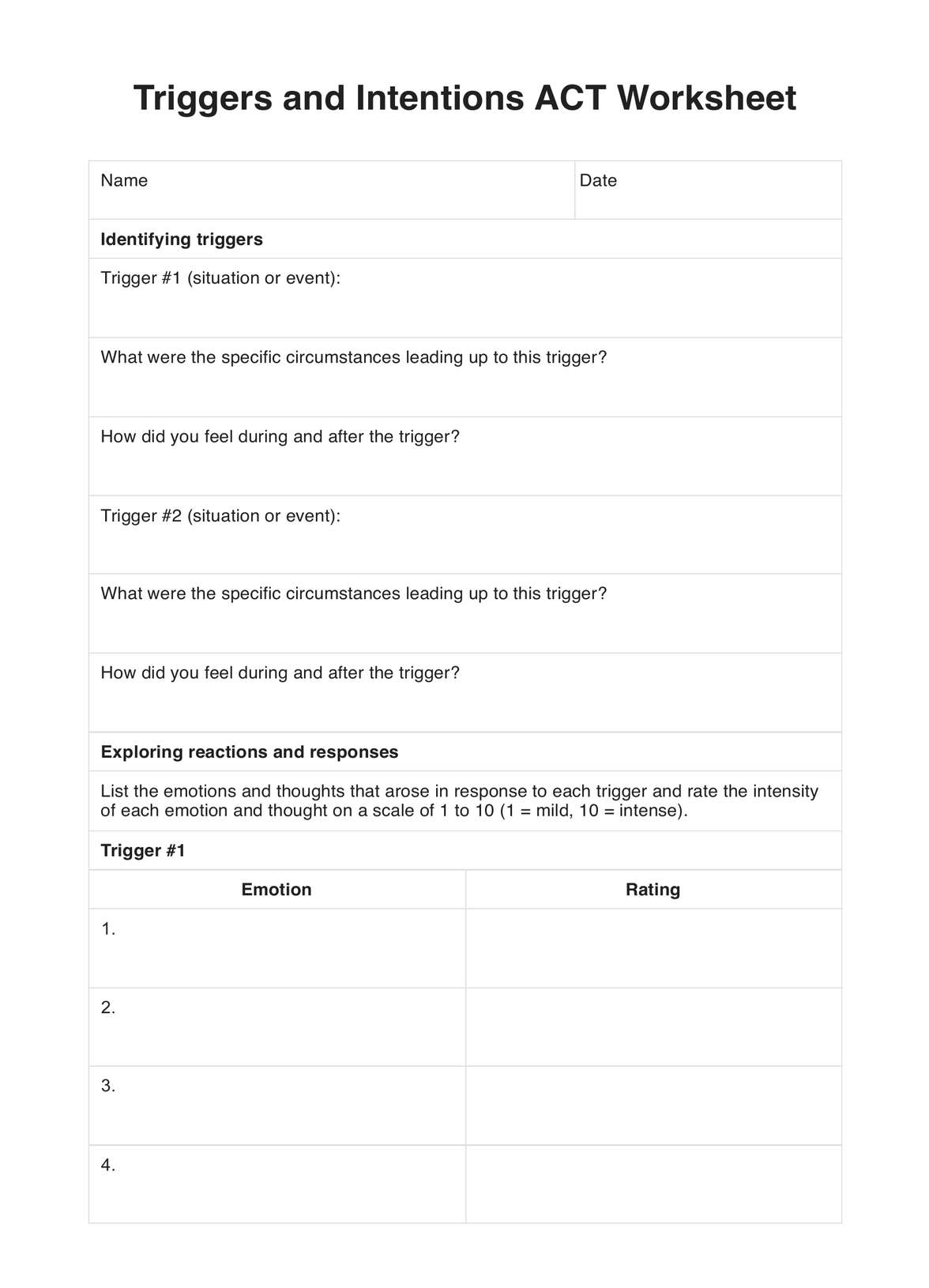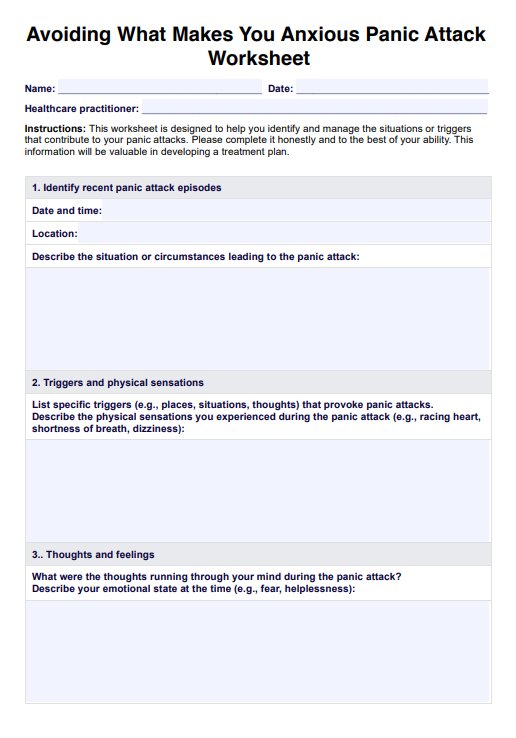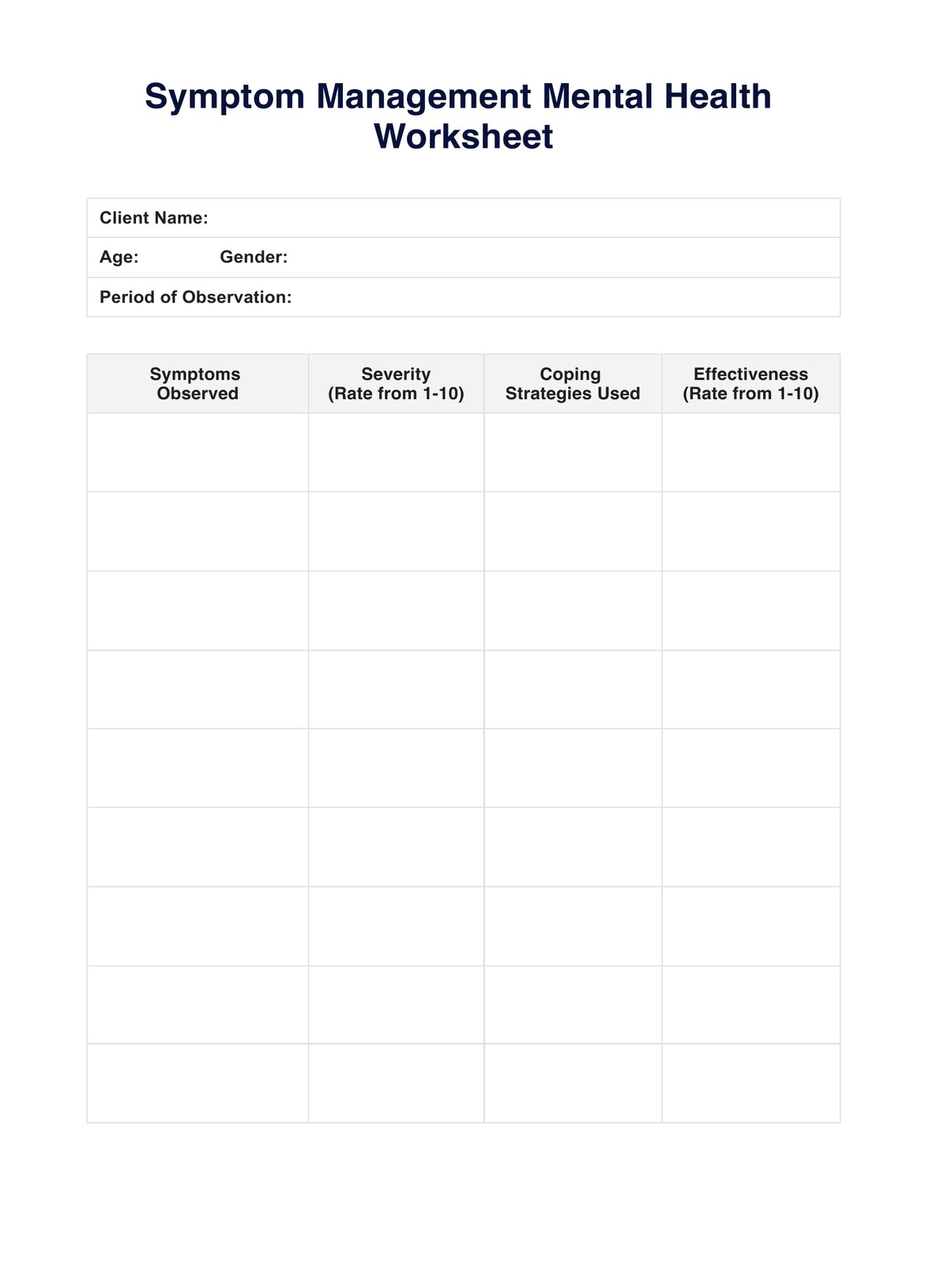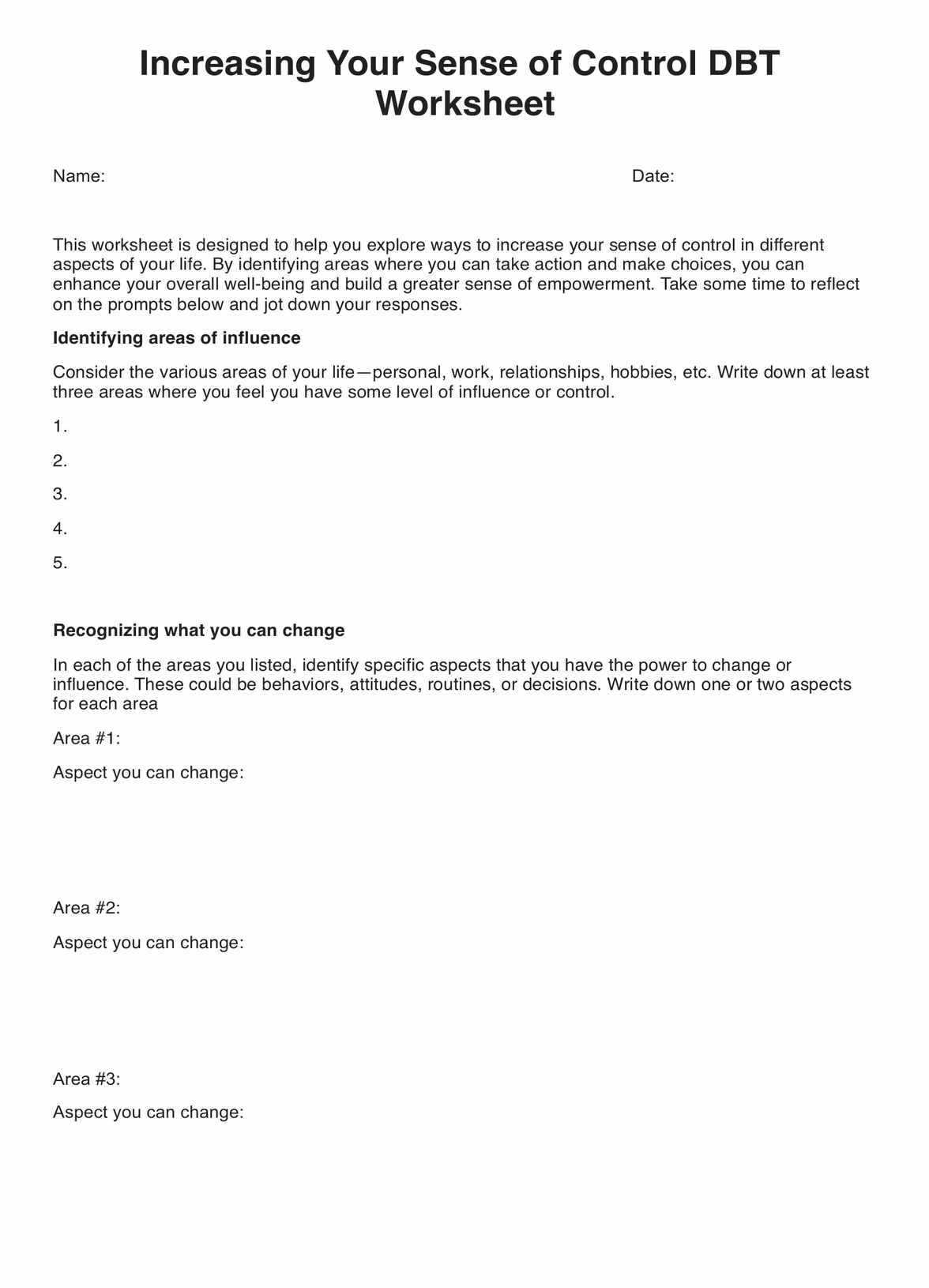PMDD Test
Utilize and download this PMDD test to track your patient’s symptoms and their severity to determine if they have a premenstrual dysphoric disorder.


What is a PMDD Test?
Premenstrual dysphoric disorder (PMDD), is a condition in which a woman experiences physical, emotional, and behavioral symptoms more severe than those with PMS. Some of them are severe depression, anxiety, and constant irritability. Similar to those with PMS, the symptoms occur a week before menstrual bleeding and usually disappear or lessen in severity a few days after menstrual cycles begin. Here's a list of possible PMDD symptoms your client may experience:
- Depression
- Anxiety
- Nervousness
- Mood Swings
- Insomnia
- Cramps
- Severe Fatigue
- Anger
- Difficulty concentrating
There's no single cause for premenstrual dysphoric disorder. It can be a mix of the chemicals in one brain and hormones in one's body as well as other factors such as alcohol or substance abuse, as well as physical symptoms including weight, family medical history, and poor lifestyle.
Currently, no physical exam, lab test, or standardized test can diagnose PMDD. However, it is possible to rule out other diagnoses with a symptom tracker, such as our template. It can also be helpful to acknowledge any further testing that may be required in terms of mental health disorders. However, it is important to note that this is not designed to be a standardized test.
Our version of a “PMDD test” comes complete with questions on diet, lifestyle, and medical history, as well as a symptom checker and tracker. And though it can't be used to diagnose the disorder, you can use it as a resource to require your patient to do further examination, testing, etc.
PMDD Test Template
PMDD Test Example
How does this PMDD Test work?
Step One: Download the template
Click the “Download template” or “Use Template” button located above or search for “PMDD Test” in Carepatron's template library on the app or website.
Step Two: Fill out the needed information
At the top, don't forget to write down the following information: date, patient's name, date of birth, age, gender, and the physician's name.
Step Three: Conduct a short interview
You may conduct a short interview during the initial consultation to partially fill out the template. We've provided guide questions to help you gather information regarding their diet, lifestyle, medical history, as well as their risk factors and other physical symptoms of premenstrual dysphoric symptoms.
Step Four: Provide instructions to the patient
Once you're finished with your interview, you may give the template to your patient and give the following instructions:
- Under the symptom checklist, tick the symptoms you are experiencing, whether that's mild or severe.
- Proceed to the common symptoms chart and write down the start date.
- Write down the physical symptoms you checked previously under the symptom column.
- Track your symptoms as soon as your menstrual cycles begin. Score them according to the scoring guide provided. Do this every day.
- After you've filled out the table, set another consult appointment to go over the results.
PMDD Test scoring
Each number in the symptom scoring table is equivalent to a certain pain severity. To score, simply choose the number equal to the pain level you're experiencing per symptom and write it down on the symptom row and the corresponding day.
When to use this PMDD assessment?
There are several situations where you can utilize this PMDD assessment template. However, before you administer one, it's ideal that your patient meets at least one of the following criteria:
- Expressing concerns about experiencing PMS symptoms or worse, such as:
- Breast tenderness
- Anxiety
- Food cravings
- Joint or muscle pain
- Mood swings
- They've done a complete physical exam, including a pelvic exam, tested their thyroid, and undergone a mental health evaluation.
- When they have a family history of PMS/PMDD, mood disorders such as bipolar disorder but more specifically depression, and if they have the inclination to use substances such as cigarettes and tobacco.
Though it is ideal, you can still administer the test wherever you see fit.
Do remember that this PMDD is a tracker and should not be used as the sole resource for diagnosing PMDD. It's best to ask your patient to do additional consultation or do further tests to eliminate other possible diagnoses. Such as:
- Mental disorders
- Depressive disorder
- Mood disorder
- Psychiatric disorders
- Other mental health condition
Who is this PMDD Test PDF for?
This test is for anyone who thinks that answering it may help explain the symptoms they are experiencing. Medical practitioners who may use this as a base or additional resource and benefit from it are:
- Gynecologists
- Physician's Assistants
- Primary Care Doctors
- Nurse Practitioners
- Mental Health Professional
- Endocrinologists
Aside from them, since this test doesn't necessarily have to be answered by the practitioner alone, aside from the patient, their loved ones, such as their partner, friends, or family may answer on the patient's behalf in situations when the partner needs assistance. Other times, PMS and PMDD symptoms may be better seen by outside people. They may be more prone to the negatives of the emotional symptoms as well as having more knowledge about personal or family history.

How to interpret the PMDD Test?
Interpretation of the individual scores is dependent on the patient’s understanding of the symptom scoring. The scores and their corresponding severity are written down in the table on the template. Generally, the higher the number, the more painful the symptom is and the more it interferes with daily life.
What does PMDD Test measure?
Aside from gathering information on one’s medical history, the PMDD test we’ve created measures the pain severity of the symptoms the patient is experiencing.
How to administrate PMDD Test?
One can begin the process of administering the PMDD test during the first consultation. However, unlike other tests, it can only be deemed finished if the patient fills up the 30 or 31 days religiously and comes back for a consultation where you, the practitioner, and the patient go over the results.
Benefits of free PMDD Test
Monitor severity of symptoms
One of the main components of our PMDD test template is our symptom chart. On it, you or your patient can easily and efficiently monitor the severity of the symptoms experienced.
Improve communication
When patients are unsure where to start when talking about themselves or their experience, having a guide with prompts, such as the PMDD test, can be helpful. Clients are more likely to open up and share exactly what you need to help them with as a possible treatment plan.
Early Detection and Prevention
Tests with questions and trackers such as ours can be helpful in early detection and prevention, especially for conditions that don't have standardized tests yet. And even though the test is not a diagnostic tool, it's still helpful in determining whether or not the patient needs intervention and possible treatment options.
Fully digital
Trackers come in many forms, such as printed sheets, notebooks, and even apps. The benefit of having a fully digital PDF test like ours is that it doesn't use much storage and is easily editable on Carepatron or a PDF editor. Moreover, it's accessible anytime and anywhere on any gadget you have on hand.
Saves time and money
For practitioners, our template saves you both time and money because you don't have to start from scratch, and everything you need to edit and store the results of this form is available for free on Carepatron.
For patients, on the other hand, there's no need to pay to sign up on an additional app or even buy a notebook and create a tracker from scratch.
Commonly asked questions
Interpretation of the individual scores is dependent on the patient’s understanding of the symptom scoring. The scores and their corresponding severity are written down in the table on the template. Generally, the higher the number, the more painful the symptom is and the more it interferes with daily life.
Aside from gathering information on one’s medical history, the PMDD test we’ve created measures the pain severity of the symptoms the patient is experiencing.
One can begin the process of administering the PMDD test during the first consultation. However, unlike other tests, it can only be deemed finished if the patient fills up the 30 or 31 days religiously and comes back for a consultation where you, the practitioner, and the patient go over the results.


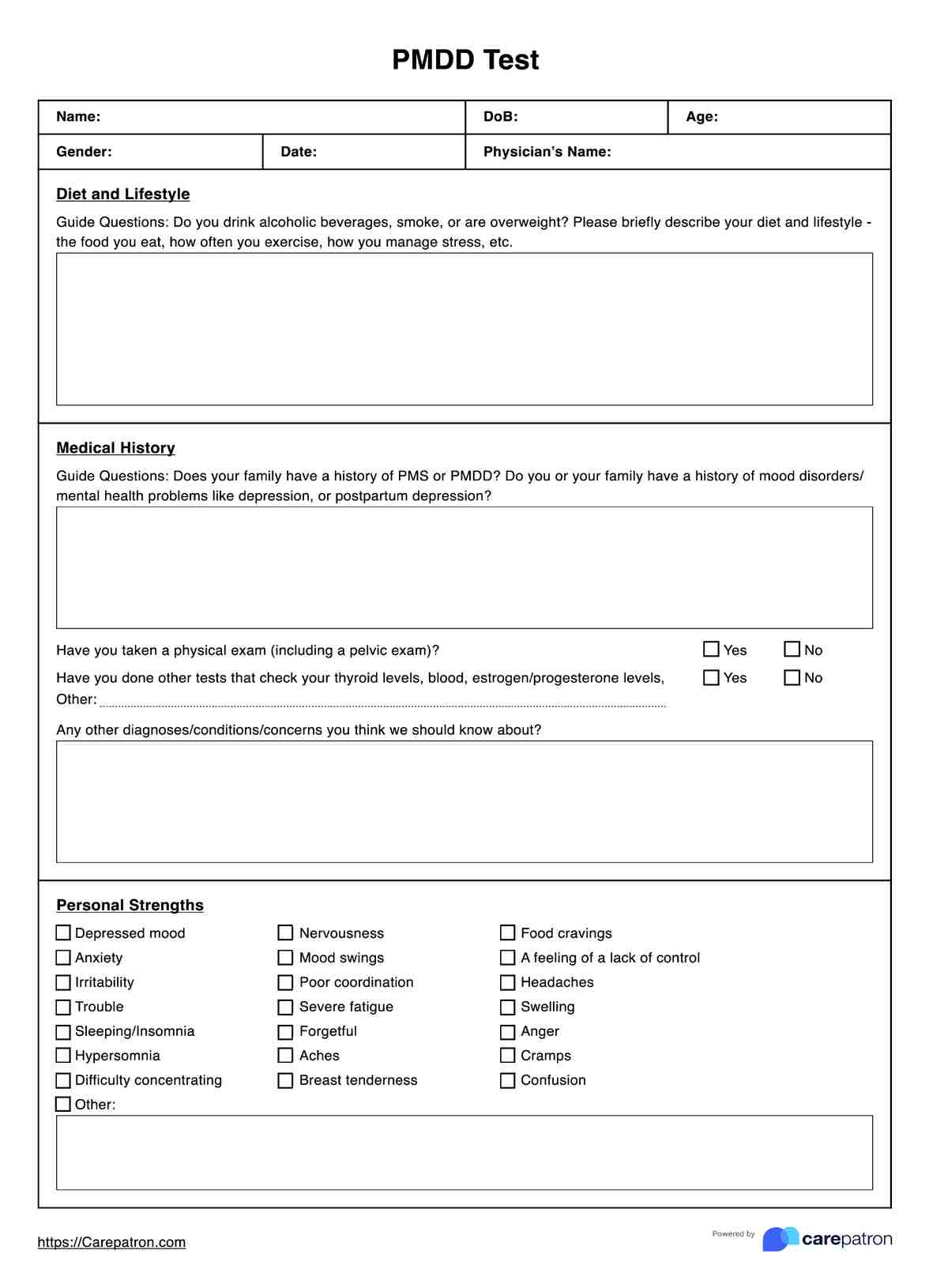
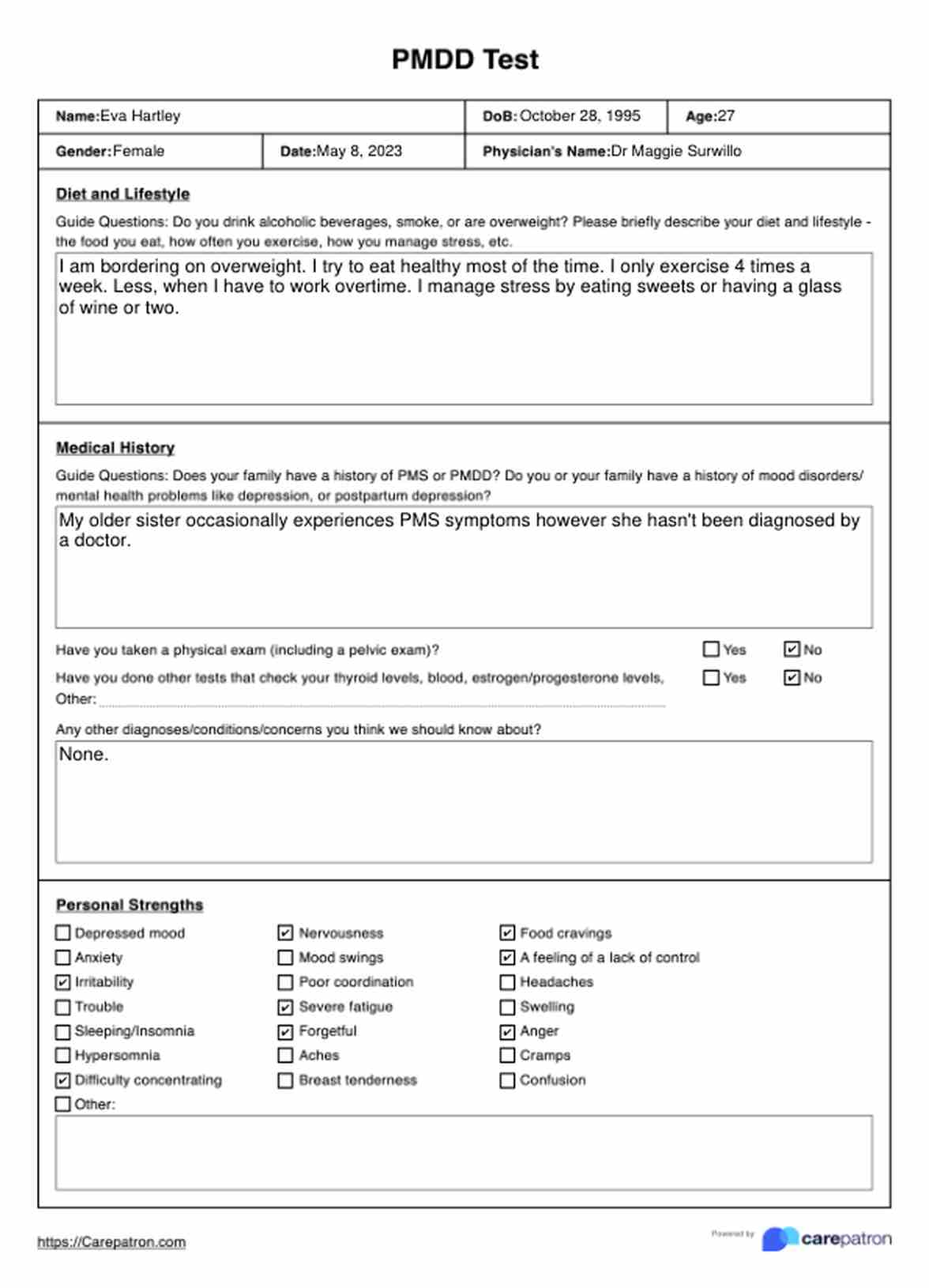













-template.jpg)























































































